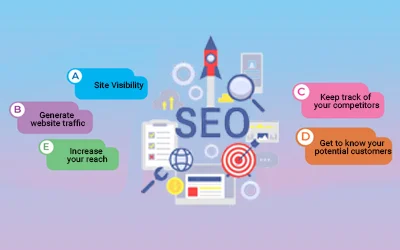The use of conventional or traditional apps is reducing day by day as low code no code platforms are tapping the market.
According to Gartner, 65% of application enhancements can be completed using low and no code platforms in 2024, compared to less than 25% in 2020.
With this rapid adoption, it is very important to recognize how these structures work, in addition to their key ability advantages and disadvantages.
This guide will help you navigate the best low code no code platforms and discover which ones are well-suited to your business wishes.
Understanding of Low Code and No Code platforms
Low-code and no code platforms ease the software program improvement system and provide equipment that reduces or diminishes the need for programming. These platforms use graphical user interfaces (GUIs), templates, and drag-and-drop functionality to facilitate non-technical user-building applications.
Here's a quick evaluation of no code low code platforms:
- Low Code Platforms: These platforms still require some coding but streamline the process through pre-built templates and GUIs. They are ideal for IT professionals seeking to develop custom applications quickly.
- No Code Platforms: These platforms cater to users with no coding background, providing fully visual tools for application building. They are perfect for business professionals who want to create simple apps without hiring web developers.
Key Advantages of Low Code No Code Platforms
Low code no code platforms are like easy-to-use toolkits for building applications and software programs without getting into a lot of complex code. They are great for people looking to create digital solutions easily without being an experienced programmer.
Let's explore some key benefits of using these top low code no code platforms.
- Accelerated Development: By reducing the need for manual coding, these platforms significantly speed up the application development lifecycle.
- Cost Savings: The reliance on pre-built components lowers Web Development Costs, reducing the need to hire extensive development teams.
- Flexibility: Users can quickly adapt to changing requirements and easily update their applications.
- Democratization of App Development: Empowering business professionals to create their applications helps bridge the gap between IT and business goals.
Top Low Code No Code Platforms
If you're looking to create apps or software without getting much into technical details, no code low code platforms could be your new best friends.
Let's take a look at some of the best low code no code platforms out there.
1. OutSystems
Features:
- End-to-stop web and cellular application development, integration of AI/ML components for predictive analytics.
- Automating workflows enables seamless control of complex business tactics.
- Native analytics offer real-time insight into overall application performance and help companies improve their techniques.
Ideal for: Businesses that need to enhance their custom application development with robust integration and scalability.
2. Mendix
Features:
- Offers visual modeling, making it easier to visualize complex business processes.
- Automated testing and AI-driven recommendations help streamline development and improve accuracy.
- Collaborative tools like built-in version control and user feedback loops promote teamwork among business and technical users.
Ideal for: Companies seeking rapid development of complex enterprise applications with strong collaborative features.
3. Appian
Features:
- Business process automation simplifies repetitive tasks, increasing efficiency.
- Dynamic case management helps track different workflows and optimizes resource allocation.
- Advanced analytics provide deep insights into business operations for strategic decision-making.
Ideal for: Organizations focused on automating complex business processes and achieving workflow efficiency.
4. Zoho Creator
Features:
- Offers a drag-and-drop builder for rapid app creation with minimal coding.
- Workflow automation allows users to define business rules and automate data processing.
- Integration with AI assistants provides advanced natural language processing and data insights.
Ideal for: Small businesses looking to create websites for business operations and automate workflows.
5. Salesforce Lightning
Features:
- Pre-built templates speed up the development of buyer-passed applications.
- Drag-and-drop add-ons make it easy to customize packages without deep technical talent.
- Tight integration with the Salesforce CRM platform ensures seamless record flow and buyer control.
Ideal for: Companies investing in Salesforce and mobile app development specifically for consumer engagement.
6. Microsoft PowerApps
Features:
- Integrates seamlessly with Microsoft 365 for cross-platform productivity.
- Offers pre-built templates and a drag-and-drop builder for rapid app creation.
- Connectors and workflow automation improve efficiency by linking Microsoft services and third-party tools.
Ideal for: Enterprises using Microsoft 365 looking to enhance productivity with custom apps.
7. Webflow
Features:
- The visual development environment provides powerful tools for designing responsive websites without coding.
- CMS integrations enable content creators to publish and manage website content effortlessly.
- Pre-built templates and customizable design elements allow for visually rich, high-quality websites.
Ideal for: Web development companies and creative professionals building visually rich websites quickly.
Limitations and Challenges
While low code no code platforms offer numerous benefits, they also present challenges that businesses must be aware of:
- Vendor Lock-In: Businesses rely heavily on platform-specific tools, risking disruption if the vendor changes pricing policies or shuts down.
- Limited Customization: Pre-built templates and GUIs can constrain highly specialized needs, reducing flexibility for unique features.
- Scalability issues: Some no code low code platforms may also conflict when handling complex, large-scale applications that require excessive performance.
- Security Concerns: Security measures may not be sufficient for noticeably sensitive facts, especially in highly regulated industries.
Best Practices for Using Low Code No Code Platforms
Using low code no code platforms can be simple and easy, but following some best practices can make your experience even smoother. These tips will help you make the most out of these top low code no code platforms and build amazing apps or software with ease.
- Assess business requirements: Determine if the platform aligns with your unique needs, workflows, and custom features.
- Choose the right platform: Evaluate exceptional no-code and low code platforms based primarily on their features, scalability, pricing, and support.
- Prioritize security: Ensure the platform meets industry requirements for statistics security and compliance.
- Plan for Integration: Choose no-code and low code platforms that integrate well with existing systems to avoid data silos.
- Prototype quickly: Use the platform's facilities for fast prototyping and personal experience to improve features.
Conclusion
The upward rise of low code no code platforms has democratized software program improvement and enabled organizations to innovate rapidly. These structures offer a number of advantages that include reduced development fees and faster time-to-market. However, companies must carefully assess their needs and understand the limitations to select the best low code no code platforms.
By balancing the strengths and potential pitfalls of these platforms, companies can transform how they approach software development, aligning technology with business objectives seamlessly. You should consider hiring a web development company like Invoidea for their expert developers who will assist you in the process.









